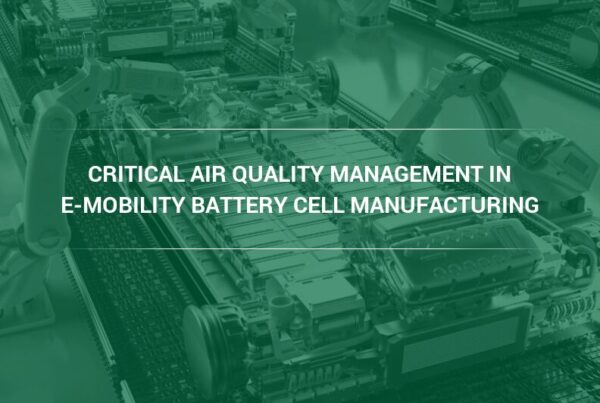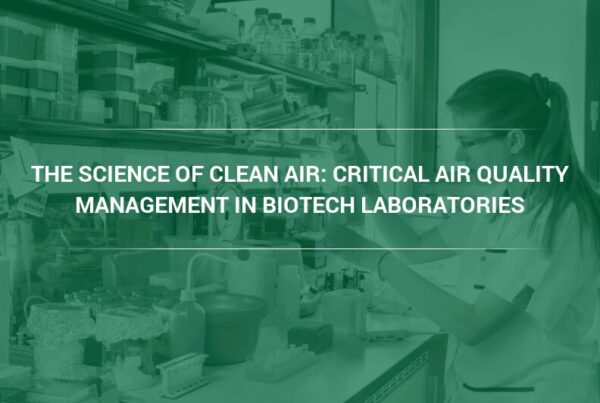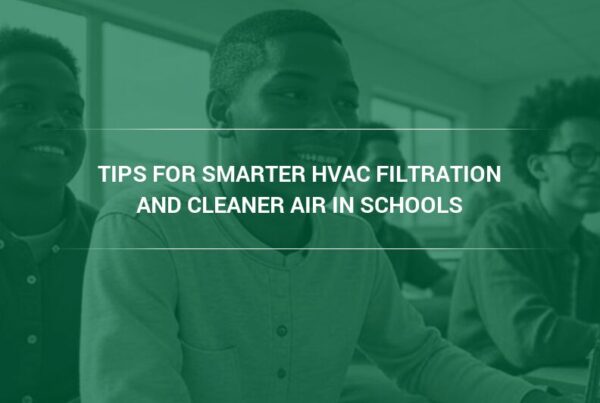As the world accelerates into the age of artificial intelligence (AI), data centers—the heart of our digital economy—are facing new and unprecedented challenges. From powering complex algorithms to storing vast amounts of data, these hubs are critical for AI’s growth. However, with increased computing and energy demands, there is a pressing need to reevaluate how data centers manage their indoor environments, particularly in terms of air filtration.
The AI Explosion and Its Strain on Data Centers
AI technologies are changing the nature of many industries, from healthcare and finance to manufacturing and entertainment. However, these advancements come at a significant cost in terms of computing power. As these systems evolve, the demand for processing power and storage continues to skyrocket.
AI is inherently energy-hungry. From training complex neural networks to running real-time inference on vast datasets, AI workloads are intensive. As AI systems scale, they require more servers, more storage, and more energy. AI models, especially large language models (LLMs) like GPT, require enormous computational resources. Training a single LLM comparable to GPT-3, for example, consumes approximately 10 gigawatt-hours (GWh), which is around the equivalent annual electricity consumption of over 1,000 American households.
Data centers are already responsible for a significant portion of global energy consumption. The International Energy Agency (IEA) reported that data centers consumed about 1% of the world’s total electricity in 2020. With the surge in AI applications, that figure is expected to rise. In fact, researchers from MIT’s Sloan School of Management estimate that by 2030, data centers could account for up to 21% of global energy demand with the current rate of growth of AI.
This explosion in demand has created a new level of strain on data centers. The more AI models are used, the more energy is consumed, and the more heat is generated. The physical infrastructure within these data centers is under immense pressure to keep up with this rapid growth, and one often overlooked aspect of their operations is air filtration. Better air filtration would not only improve the lifespan and efficiency of equipment but also reduce the need for overreliance on cooling systems, helping to minimize energy consumption and overall environmental impact.
The Impact of Poor Indoor Air Quality (IAQ) on Data Center Equipment
Data centers house highly sensitive servers and computing hardware that require pristine operating conditions. With thousands of servers running around the clock, cooling them becomes one of the most important challenges. The increased computing capacity needed for AI processing is producing higher heat loads, requiring data centers to ramp up cooling systems to maintain safe operating temperatures, but cooling systems alone are not enough. Air quality—the cleanliness of the air circulating in the data center—is a critical, yet often underestimated, element in ensuring that this massive energy consumption is sustainable in the long run.
Airborne contaminants such as dust, particulate matter, and chemical pollutants can infiltrate cooling systems and damage critical components. Accumulation of contaminants can lead to:
- Overheating: Dust and particulates clog ventilation pathways, reducing airflow efficiency and increasing the risk of overheating, which can shorten hardware lifespan. Keeping data centers cool is essential to maintaining the performance and longevity of computing hardware. When servers overheat, they can throttle performance to prevent damage, leading to slower processing speeds and inefficiencies. In extreme cases, overheating can cause unexpected shutdowns, data loss, and irreversible damage to critical components.
- Corrosion: Airborne pollutants such as sulfur compounds and moisture can corrode metal components, leading to system failures and costly downtime. This can be especially problematic for data centers located in high-humidity environments or areas with poor air quality.
- Increased Maintenance Costs: Contaminated equipment requires more frequent cleaning and component replacement, driving up operational expenses. This can also result in additional labor costs as technicians must spend more time maintaining and repairing equipment.
- Environmental Impact: The energy consumption of data centers is a major contributor to greenhouse gas emissions. Excessive heat can require additional cooling, leading to higher energy usage and a larger carbon footprint. In some jurisdictions, companies may be fined or otherwise penalized for unsustainable energy practices.
WATCH: Corrosion in Data Centers
In addition to these technical concerns, poor air quality in data centers can reduce the overall lifespan of servers and other critical infrastructure. Server downtime due to overheating or malfunctioning equipment can lead to costly outages and data loss, which is a risk data centers and AI services simply cannot afford.
Prioritizing Data Center IAQ for Better Cybersecurity
Indoor air quality (IAQ) is not only crucial for hardware performance but also plays a role in cybersecurity. Contaminants such as dust and pollutants can lead to unexpected hardware malfunctions, increasing the risk of downtime and potential security vulnerabilities. A compromised cooling system due to poor air quality can force servers into emergency shutdowns, disrupting critical cybersecurity monitoring and exposing networks to external threats. In fact, cybersecurity experts from VentureBeat warn data center managers and tech users that modern-day attackers “aim to weaponize heat and exfiltrate billions of dollars in data from data centers by attacking cooling systems.”
By investing in high-efficiency air filtration, data centers can maintain a stable operating environment, ensuring that security systems, firewalls, and intrusion detection mechanisms remain continuously operational. Clean air helps safeguard both the physical and digital assets of an organization, reinforcing the resilience of data centers in an era of increasing cyber threats.
How Poor Filtration Increases Energy Costs
Selecting low-quality air filters may seem like a cost-saving measure, but it can lead to increased energy consumption and inefficiencies. Many budget-friendly filters have a high pressure drop, meaning they create resistance in airflow, forcing cooling systems to work harder to maintain optimal temperatures. This results in:
- Higher Energy Usage: The additional strain on cooling fans and HVAC systems leads to greater electricity consumption, increasing overall operational costs.
- Reduced Cooling Efficiency: Inadequate filtration allows more contaminants to pass through, causing HVAC components to clog faster and reducing cooling effectiveness.
- Frequent Filter Replacements: Lower-grade air filters may require more frequent changes, adding to labor and material costs over time.
Camfil’s High-Efficiency Air Filtration Solutions
To combat these challenges, investing in high-quality air filtration is essential. Camfil, a leader in air filtration technology, provides innovative solutions designed specifically for data centers. Their products offer:
- Low Pressure Drop for Longer: Camfil filters are engineered to provide superior airflow efficiency, reducing energy consumption while maintaining high filtration performance.
- Extended Service Life: With durable construction and advanced media technology, Camfil’s filters last longer, minimizing maintenance disruptions.
- Targeted Solutions: Camfil’s filters are designed for a wide range of applications and can be tailored to fit the individual needs of each facility.
Camfil at Data Center World 2025
Camfil showcased its latest air filtration solutions at the 2025 Data Center World conference on April 14-17. This event brings together industry leaders, data center operators, and technology experts to discuss the future of data center sustainability and efficiency. Attendees had the opportunity to explore Camfil’s advanced filtration products, learn about their impact on energy savings, and engage with experts on best practices for air quality management in high-performance computing environments.
About Camfil
For over 50 years, Camfil has been developing clean air solutions that enhance well-being, improve productivity, and minimize environmental impact. As a global manufacturer of commercial and industrial air filtration systems, Camfil is committed to conserving resources while benefiting both businesses and the planet. Headquartered in Stockholm, Sweden, Camfil operates 30 manufacturing sites, six R&D centers, and has a presence in over 35 countries with 5,600 employees worldwide. Learn more about creating cleaner, healthier indoor air at www.camfil.us.
Media Contact
Lynne Laake
Camfil USA Air Filters
Phone: 888-599-6620
Email: Lynne.Laake@camfil.com
Sources:
https://venturebeat.com/data-infrastructure/the-cyber-risks-of-overheating-data-centers/
https://www.washington.edu/news/2023/07/27/how-much-energy-does-chatgpt-use/



